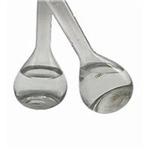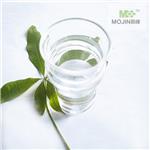Mineral oil mist is a colorless, oily liquid aerosol
dispersed in air with an odor like burned lubricating oil.
The odor threshold is 1.0 ppm.
mineral oil is an emollient cleanser and demulsifier of dirt trapped in pores. Mineral oil is excellent for use in cleansers. In leave-on cosmetics, its comedogenicity or lack thereof appears related to the level of raw material refinement; therefore, some suppliers state that their product is non-comedogenic. When used in leave-on preparations, mineral oil’s occlusive capability is considered to help improve the epidermal barrier function. This is a clear, odorless oil derived from petroleum and is not known to cause allergic reactions.
Mineral oil is used as an overlay covering microdrops of culture medium in petri dishes. It is an active ingredient in baby lotions, cold creams, ointments and cosmetics. It is also used in electrical and mechanical industries as thermal fluid in electrical components and non -conductive coolant. It finds application as a transformer oil, as an anti rust agent for blades and as an insulator in high voltage switchgear. Further, it is used to store reactive metals like lithium, sodium, etc and in X-ray crystallography to suspend crystals.
For routine PCR amplifications. Minimizes evaporation of reactions run in PCR instruments without heated lids.
Mineral oil is a highly refined petroleum mineral oil consisting of a complex combination of hydrocarbons obtained from the intensive treatment of a petroleum fraction with sulfuric acid and oleum, or by hydrogenation, or by a combination of hydrogenation and acid treatment. Additional washing and treating steps may be included in the processing operation. It consists of saturated hydrocarbons having carbon numbers predominantly in the range of C15 through C50.
Fecal softeners are substances that are not absorbed
from the alimentary canal and act by increasing the
bulk of the feces and softening the stool so that it is easier
to pass. Mineral oil has been in use for many years,
either as the oil or as a white emulsion; it is a mixture of
liquid hydrocarbons. Its use has been criticized for
many reasons. It dissolves the fat-soluble vitamins and
prevents their absorption.
Balneol
(Solvay Pharmaceuticals); Neo-Cultol (Fisons); Nujol
(Schering-Plough HealthCare).
Sigma′s Blue-White Select? Screening Reagent is a chromogenic substrate for β-galactosidase, used to determine the presence or absence of a cloned DNA insert in bacteria growing on agar plates. Blue-White Select? Screening Reagent is designed for blue-white selection of recombinant bacterial colonies with the lac+ phenotype.
Recommended Personal Protective Equipment: Goggles or face shield; Symptoms Following Exposure: Ingestion of liquid can cause very loose bowel movements; General Treatment for Exposure: EYES: wash with water; Toxicity by Inhalation (Threshold Limit Value): Not pertinent; Short-Term Inhalation Limits: Not pertinent; Toxicity by Ingestion: Grade 1, LD50 = 5 to 15 g/kg; Late Toxicity: None; Vapor (Gas) Irritant Characteristics: None; Liquid or Solid Irritant Characteristics: None; Odor Threshold: Not pertinent.
Flammability and Explosibility
Non flammable
Reactivity with Water No reaction; Reactivity with Common Materials: No reaction; Stability During Transport: Stable; Neutralizing Agents for Acids and Caustics: Not pertinent; Polymerization: Not pertinent; Inhibitor of Polymerization: Not pertinent.
Mineral oil functions by forming a depot at the injection site slowly releasing antigen.
It is itself absorbed slightly
and appears in the mesenteric lymph nodes, and if it is
inhaled into the lungs (which it may be in elderly or debilitated
patients), it may produce inflammatory responses
such as lipoid pneumonia. Its continual use,
therefore, is contraindicated, although its occasional administration
in otherwise well patients is not harmful. It
is employed primarily in patients who must avoid
straining at stool, including persons with hemorrhoids
and other painful anal lesions. Leakage of mineral oil
past the anal sphincter may lead to soiling of clothing.
Docusate dioctyl sodium sulfosuccinate (Colace),
Highly purified food
grades are of low toxicity. Questionable
carcinogen. When heated to decomposition
it emits acrid smoke and irritating fumes.
Mineral oil is used in cosmetics,
pharmaceutical bases; food, and fiber production; as
carriers and bases; as a lubricating oil and as a solvent for
inks in the printing industry. Oil mist would be encountered
in quenching of hot metal parts and in metal machining
operations.
Veterinary Drugs and Treatments
Mineral oil is commonly used in horses to treat constipation and
fecal impactions.
It is also employed as a laxative in other species
as well, but used less frequently. Mineral oil has been administered
after ingesting lipid-soluble toxins (e.g., kerosene, metaldehyde) to
retard the absorption of these toxins through its laxative and solubility
properties.
Petrolatum containing products (e.g., Felaxin?, Laxatone?, Kat-
A-Lax?, etc.) may be used in dogs and cats as a laxative or to prevent/
reduce “hair-balls” in cats.
Incompatible with oxidizers (chlorates,
nitrates, peroxides, permanganates, perchlorates, chlorine,
bromine, fluorine, etc.); contact may cause fires or explosions.
Keep away from alkaline materials, strong acids
(especially nitric acid), strong bases.
The initial threshold screening level (ITSL) for white mineral oil (CAS No. 8042-47-5) is 50 μg/m3 based on an 8-hour averaging time.
Dissolve or mix the
material with a combustible solvent and burn in a chemical
incinerator equipped with an afterburner and scrubber.
All federal, state, and local environmental regulations
must be observed.


